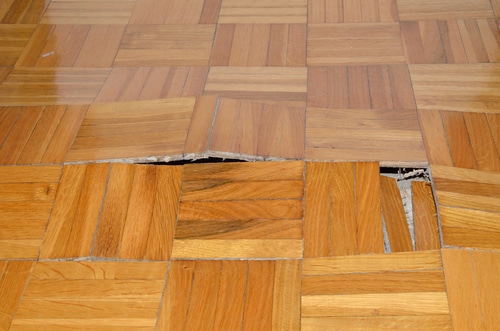How to Check If Your Residence Has a Surprise Leakage
How to Check If Your Residence Has a Surprise Leakage
Blog Article
What are your beliefs about Hacks to detect leaks?

Early detection of dripping water lines can alleviate a potential catastrophe. Aside from conserving you money, it will minimize the irritation and also irritation. The moment you locate a leak, calling your plumber for repairs is the very best solution. Some little water leaks may not be noticeable. Here are some hacks that assist if you can not spot it with your naked eyes.
1. Examine the Water Meter
Checking it is a surefire method that helps you discover leakages. If it relocates, that suggests a fast-moving leakage. This indicates you might have a slow-moving leak that could even be underground.
2. Check Water Usage
Examine your water costs and also track your water consumption. As the one paying it, you need to see if there are any kind of inconsistencies. If you find sudden changes, regardless of your consumption coinciding, it indicates that you have leakages in your plumbing system. Bear in mind, your water costs must drop under the exact same range on a monthly basis. An abrupt spike in your costs suggests a fast-moving leakage.
Meanwhile, a constant rise each month, even with the same behaviors, shows you have a slow-moving leak that's also gradually intensifying. Call a plumber to thoroughly examine your building, particularly if you feel a cozy area on your flooring with piping beneath.
3. Do a Food Coloring Examination
When it comes to water intake, 30% comes from toilets. If the color in some way infiltrates your bowl during that time without flushing, there's a leak in between the tank as well as dish.
4. Asses Exterior Lines
Don't neglect to check your outside water lines also. Test spigots by affixing a garden hose. Must water permeate out of the connection, you have a loose rubber gasket. Change this and also guarantee all links are limited. If you've got a lawn sprinkler, it will certainly help get it skillfully examined and preserved each year. One tiny leakage can waste tons of water and spike your water expense.
5. Assess the situation and inspect
Property owners must make it a routine to inspect under the sink counters as well as even inside cabinets for any bad odor or mold and mildew development. These 2 warnings suggest a leak so prompt attention is required. Doing regular examinations, also bi-annually, can save you from a major trouble.
If you know your residence is currently old, keep a watchful eye on your heaters, tubes, pipelines etc. Look for stainings as well as weakening as most pipelines as well as appliances have a life span. They will certainly also normally degrade due to damage. Do not wait for it to intensify if you believe dripping water lines in your plumbing system. Call a professional plumber right away so you do not end up with a dreadful mess in your home.
Early detection of dripping water lines can mitigate a prospective disaster. Some small water leakages may not be noticeable. Examining it is a surefire method that aids you discover leakages. One little leak can lose tons of water as well as increase your water bill.
If you think dripping water lines in your plumbing system, do not wait for it to escalate.
How to Know If Your Home Has a Hidden Leak
Water Meter Reveals Inexplicable Water Usage
If you’d like to test whether or not there’s a leak somewhere in your home, you can do this using your water meter. Here is how to conduct the test:
Don’t use any water in your home for at least 30 minutes; this also means not turning on faucets or water-using appliances.
Go outside, and check your water meter for activity.
If your water meter shows that there was activity, even though no one was using any water, this proves that there is a leak in your home.Visible Mold or Mildew Growth
Leaks behind walls create moist, dark environments that allow mold and mildew to grow and thrive. Eventually, you might see mold growth forming on the wall closest to a hidden leak.
If mold is growing in an area that receives a high amount of moisture, such as a bathroom, it may simply be an indication that better ventilation is needed. However, if you see mold growth on a wall or the ceiling in an area where you would not expect, you probably have a hidden leak.
Musty, Mildew Odor
Sometimes you might not be able to see the mold or mildew that is growing as a result of a leak. However, the smell can give the problem away just as easily. If you catch a whiff of something musty, there’s a good chance that old water is collecting somewhere in your home that you can’t see.
Stained/Warped Walls, Ceilings, or Floors
When your home soaks up water, a variety of red flags can become visible, including ceiling stains, bubbling drywall, warped walls, and sagging floors. While these issues can be caused by excess humidity, they can also be signs that a pipe or plumbing connection has started leaking behind your walls.
Inexplicably High Water Bill
After a while, you get a general sense for what your water bill should be. If you own a pool or sprinkler system, your bill will tend to be higher during summer. However, if you receive a water bill that seems especially high, and you can’t figure out what caused it, then you may have a hidden leak somewhere that’s increasing your bill.
https://www.plumbingjoint.com/blog/2019/july/how-to-know-if-your-home-has-a-hidden-leak/

I'm very excited about Locating water leaks and I really hope you appreciated my entry. Liked our article? Please share it. Let others check it out. Thanks so much for your time spent reading it.
Report this page